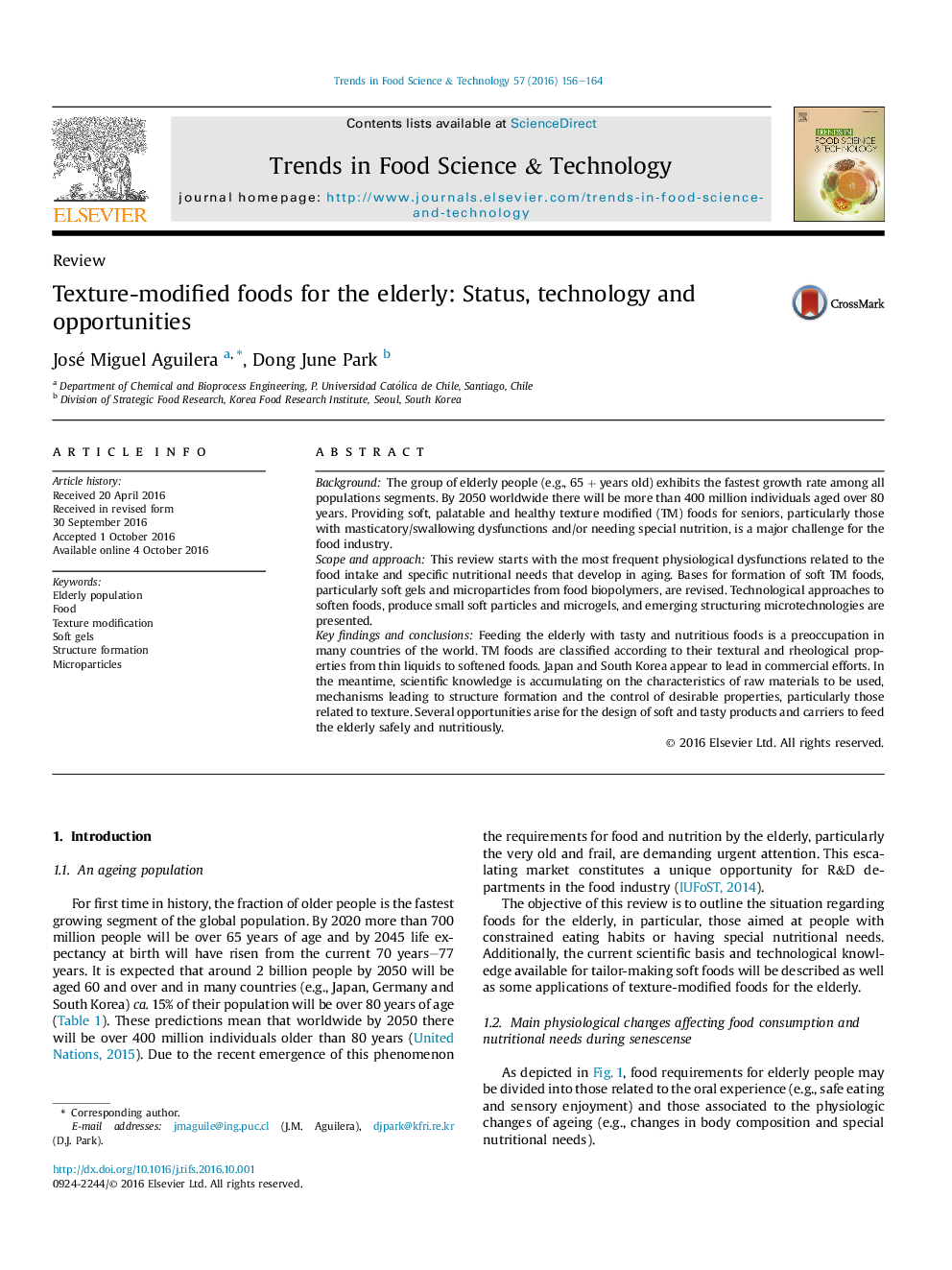| Article ID | Journal | Published Year | Pages | File Type |
|---|---|---|---|---|
| 5523853 | Trends in Food Science & Technology | 2016 | 9 Pages |
â¢By 2050 there will be more than 400 million individuals aged over 80 years.â¢Providing soft, palatable and healthy texture-modified foods is a major challenge for industry.â¢Abundant scientific knowledge on mechanisms leading to soft structure formation is available.â¢Designed soft and tasty products to feed the elderly safely and nutritiously are in progress.
BackgroundThe group of elderly people (e.g., 65Â +Â years old) exhibits the fastest growth rate among all populations segments. By 2050 worldwide there will be more than 400 million individuals aged over 80 years. Providing soft, palatable and healthy texture modified (TM) foods for seniors, particularly those with masticatory/swallowing dysfunctions and/or needing special nutrition, is a major challenge for the food industry.Scope and approachThis review starts with the most frequent physiological dysfunctions related to the food intake and specific nutritional needs that develop in aging. Bases for formation of soft TM foods, particularly soft gels and microparticles from food biopolymers, are revised. Technological approaches to soften foods, produce small soft particles and microgels, and emerging structuring microtechnologies are presented.Key findings and conclusionsFeeding the elderly with tasty and nutritious foods is a preoccupation in many countries of the world. TM foods are classified according to their textural and rheological properties from thin liquids to softened foods. Japan and South Korea appear to lead in commercial efforts. In the meantime, scientific knowledge is accumulating on the characteristics of raw materials to be used, mechanisms leading to structure formation and the control of desirable properties, particularly those related to texture. Several opportunities arise for the design of soft and tasty products and carriers to feed the elderly safely and nutritiously.
